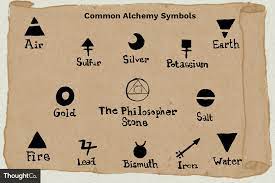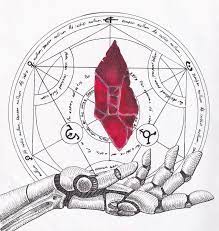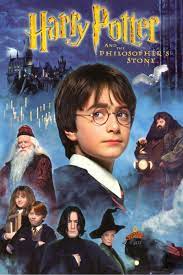Provenance
The Stillwell Family Ciphering Book was donated to Historic Huguenot Street by Richard Ordway in 1978 and is part of a bigger collection of 24 ciphering books that were hand-written. Those ciphering books were part of an even bigger collection of Stillwell/ Johnson Family papers which dates range from 1789-1943. I was unable to find any more information on the provenance of this book specifically on the Sojourner Truth Database but the collection of books was represented by a multitude of families including the DuBois and the LeFevre families, some of the most influential families known to Huguenot Street. (“Ciphering Book Collection (Ca. 1730-1849)”).

The Stillwell Family Ciphering Book includes various economic concepts like ‘Reduction’ and the values of currencies based on location. I know, riveting. But beyond that, this book offers a look into the academic and philosophical world of the Stillwell Family and gives us a look into the mind of the wealthy in the 1800s (New York Heritage-Digital Collections).

Physical Description
This book has a brown exterior with pale yellow pages on the inside. When given a closer look the seemingly semi-bendy exterior of the book has multiple shades of brown featured in small bubbles that look similar to a petri dish of bacteria under a microscope or multi-shaded stone pavement. The edges of the exterior of the book are rounded and a lighter shade of brown. The spine of the book looks scratched fairly consistently and has a small rip towards the bottom that exposes the pages of the book. The pages of the book are written in medium brown ink and most of them look like they have some type of liquid spilled on them that seems like it could be coffee. The handwriting is a neat cursive that varies in size depending on if the writing is a title or not. This book included mathematical concepts relating to international trade and the value of the dollar in different US states in the 1800s. Additionally, more specific topics included reduction, or simplification of mathematical expressions, measurement, and direct and indirect proportion. (“Ciphering Book Collection (Ca. 1730-1849).”).
The Mind of the Stillwells and the Persistence of Human Nature
When you think of the objects surrounding the history of psychology and philosophy in the US, what do you think of? Maybe it’s quills and feathers. Maybe it’s discussion tables and grand rooms.

One object that isn’t typically considered for its influence on Western thinking is the ciphering book.
A ciphering book is a textbook-like, handwritten booklet that was used frequently in the 1800s to teach people about mathematical concepts ranging from fractions and geometry to economics and applied math. These books also covered spelling, handwriting, and other English topics (New York Heritage Digital Collections). They often included examples, problems, and exercises and were used by educators as their main form of reference. Ciphering books’ often became students’ personal reference books to use later in their lives as well. (Library, Rauner).
The Stillwell Family Ciphering book, in the Historic Huguenot Ciphering Book Collection, mainly deals with the application side of math in this time period and was used by the Stillwell Family for answering what they deemed to be “practical questions”. This book was also part of a bigger collection called the Stillwell/Johnson Family Papers that included documents and photos from many wealthy families in the New Paltz area (“Stillwell/Johnson Family Papers (1789-1943)”).
Wealthy families have always had more ability to expand their educational horizons through ciphering books in the US, but what stuck out to me about this ciphering book in specific was the philosophical takes featured towards the end of the book. The more practical and direct mathematical guidelines were very common for these ciphering books, but the addition of big-picture takes on philosophy and psychology was not as common. The description of this book on the Huguenot Street website features a quote from the author. It states, “Commendation commonly animates the mind” (“Ciphering Book Collection (Ca. 1730-1849).”). The anonymous author of this book believed that praise would help people think more effectively. Even though ciphering books aren’t used today, that concept still remains in education and society in general. Two more quotes that were even more shocking to see in a ciphering book, in my opinion, were first, a take on happiness that reads, “He who cannot be happy without great pains will always find his pains greater than his happiness”, and second, a take on ownership that reads, “The possession of enjoyment is better than the enjoyment of possession” (“Ciphering Book Collection (Ca. 1730-1849).”). This last quote portrays the belief that having many belongings isn’t completely fulfilling. This is interesting to hear considering the wealth that this family had and leads me to believe that the author could’ve felt like their lifestyle, although lavish for the time, wasn’t enough in terms of real happiness. Maybe they were using their wealth to fill a void that otherwise wouldn’t have been acknowledged if not for the resurgence of enlightenment principles that was apparent in this time period.
This ciphering book, in specific, could’ve been written anywhere from 1829-1842. Throughout this time period, US philosophy started to lean more toward moral concepts and was often regarded as a continuation of the European Enlightenment. Ideas that aligned with the intentions of philosophers like Francis Bacon, René Descartes, and John Locke (Hoeveler, David J) came into the forefront of society. Locke, in specific, explored the concept of happiness in a political context and deemed it a catalyst for liberty. He also believed that pursuing happiness is a core aspect of human nature (“John Locke & the Pursuit of Happiness”). This, like the Stillwell Family Ciphering Book, explores the practical applications of happiness and the more philosophical reasoning behind the pursuit of happiness.
The proverbial language used in this book to make these claims on happiness parallels the language in the aphorisms of “commonplace books” used frequently throughout the Renaissance. Commonplace books were similar to ciphering books in that they were both an early form of the non-oral transfer of ideas and feelings. These books were used more as journals or even what we’d now use our notes app for, whereas ciphering books were used more in education, however, these books could be seen as a continuation of the tradition of these early informational outlets (Norris, R).
These perspectives on happiness are not only discussed today but also widely agreed with. It’s often hard to stop yourself from slipping into a mindset that regards history as just history-A time and place that’s separate from the here and now. But it’s important to remember that although the physical elements of history change, the human condition and the search for happiness remain constant.
References
Library, Rauner. “Rauner Special Collections Library: Ciphering Books.” Rauner Special Collections Library, 14 Nov. 2014, raunerlibrary.blogspot.com/2014/11/ciphering-books.html.
“Ciphering Book Collection (Ca. 1730-1849).”Historic Huguenot Street, http://www.huguenotstreet.org/ciphering-book-collection.
“MSS208_001_002_p001.”Nyheritage.contentdm.oclc.org, nyheritage.contentdm.oclc.org/digital/collection/p16694coll153/id/1899/rec/1.
Hoeveler, J. David, Creating the American Mind:Intellect and Politics in the Colonial Colleges, Rowman & Littlefield, ISBN 978-0742548398, 2007, p.11
“John Locke & the Pursuit of Happiness.” http://Www.pursuit-of-Happiness.org, http://www.pursuit-of-happiness.org/history-of-happiness/john-locke/#:~:text=He%20 points%20 out%20that%20 happiness.
Patkus, Beth. 5 May 2023.
“Stillwell/Johnson Family Papers (1789-1943).” Historic Huguenot Street, http://www.huguenotstreet.org/stillwell/johnson-family-papers.
Norris, Rachael. “10 Fascinating Facts about Commonplace Books.” The Reader, 29 Jan. 2021, http://www.thereader.org.uk/10-fascinating-facts-about-commonplace-books/#:~:text=Commonplace%20books%20are%20a%20tool. Accessed 9 May 2023.











